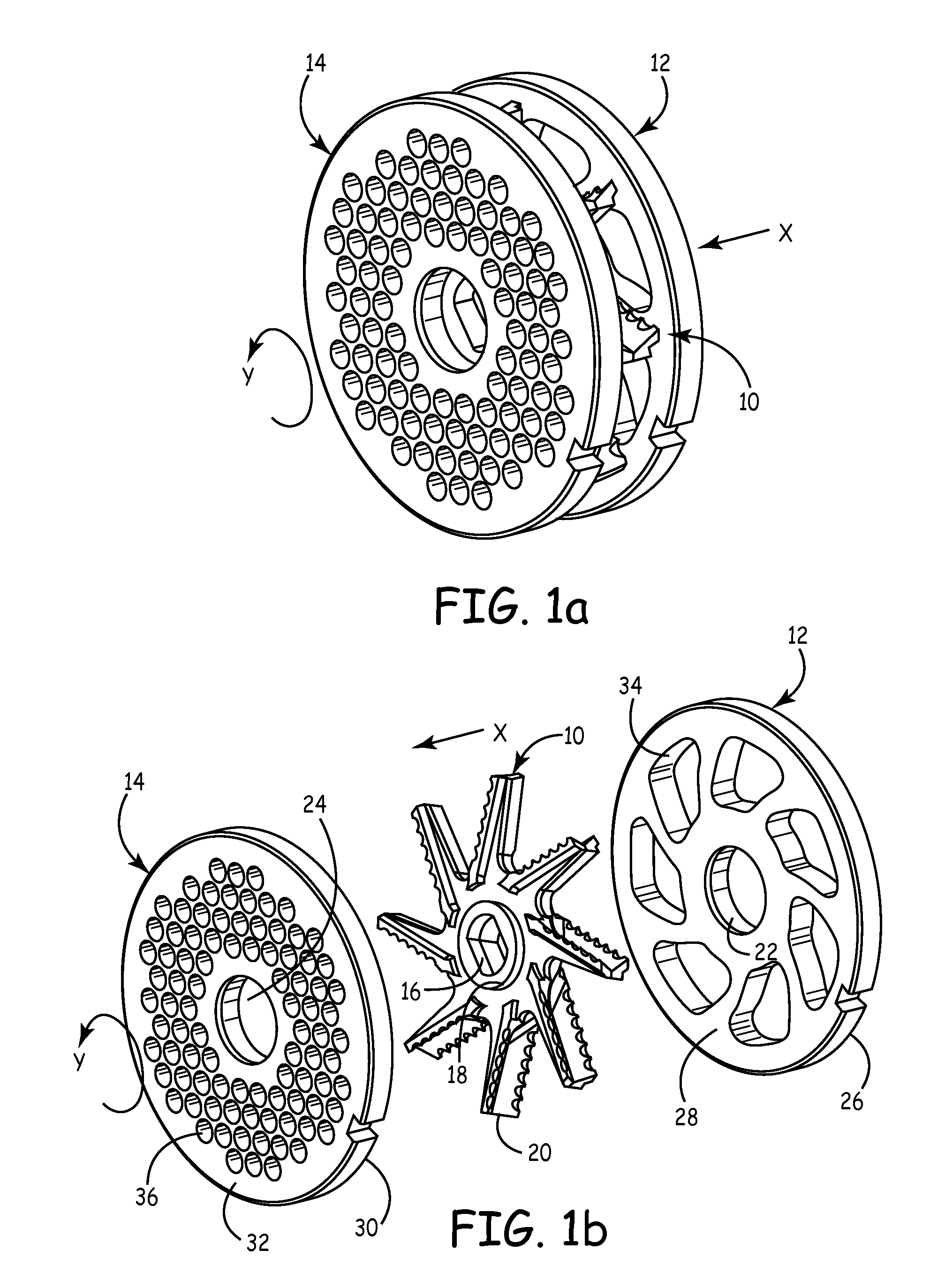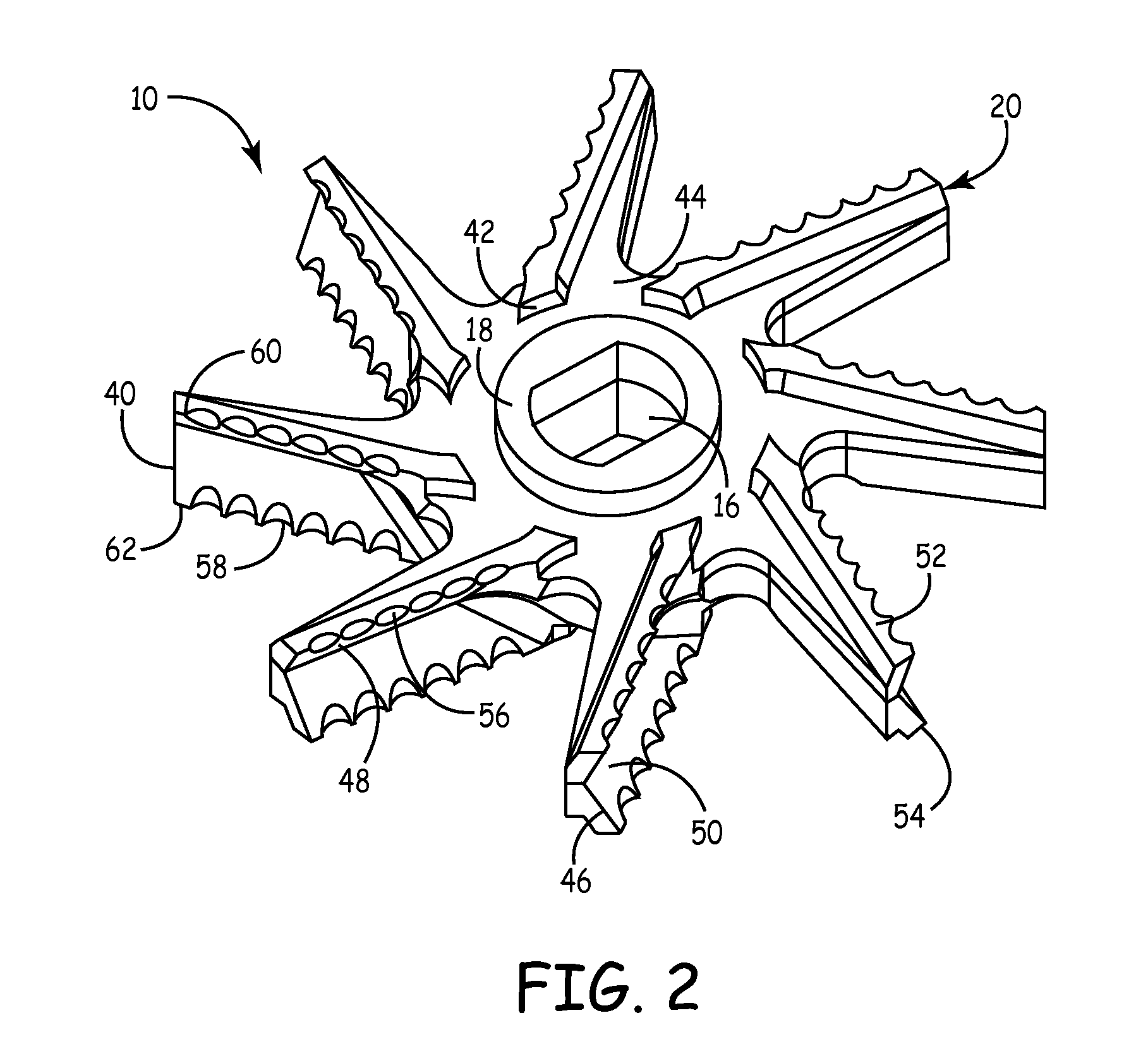Rotary knife
a rotary knife and rotary blade technology, applied in the field of rotary blades, can solve the problems of over-processing of meat, and reducing the efficiency of the food processor, so as to improve the flow of meat, reduce the number, and simple and efficient
- Summary
- Abstract
- Description
- Claims
- Application Information
AI Technical Summary
Benefits of technology
Problems solved by technology
Method used
Image
Examples
first embodiment
[0047]FIG. 3 is a perspective view of a rotary knife 110 according to a relatively simple first embodiment of the present invention. The knife 110 is adapted for use in a cutting apparatus such as an industrial food processor. Thus, a cutting apparatus according to one embodiment of the present invention is an industrial food processor comprising the knife 110 mounted coaxially between two perforated discs 112 and 114 as shown in FIGS. 5a and 5b. The discs 112 and 114 are fixed within a tubular housing (not shown). The knife 110 is rotatable about an axis of the food processor in a direction shown by arrow Z by means of a driveshaft (not shown). Food is fed through the food processor in the direction shown by arrow W. A diameter of the knife 110 is smaller than a diameter of the discs 112 and 114.
[0048]In an alternative embodiment, an industrial food processor may contain a further knife 110 and disc such that the configuration of components within the tubular housing comprises two ...
second embodiment
[0074]The rotary knife according to the present invention will now be described in use with reference to FIGS. 8a and 8b.
[0075]Meat is fed through the processor in the direction indicated by arrow W. As the meat exits the holes 234 in the exit surface 230 of the first disc 212, the blades 272 carried by the primary arms 220a of the knife 210 cut the meat as the knife 210 rotates. More specifically, the meat is cut by a scissor action between the edge of the blades 272 and the edges of the holes 234.
[0076]In use, the channels 256 assist in moving the meat efficiently from the exit surface 228 of the first disc 212 to the entry surface 230 of the second disc 214. Meat that has been cut as it emerged from the first disc 212 is channelled along the channels 256 towards the second disc 214. Thus, since the channels 256 are oriented substantially axially (i.e. parallel to the direction W), meat takes an efficient (i.e. short) route between the discs 212 and 214. As a result, meat moves m...
PUM
 Login to View More
Login to View More Abstract
Description
Claims
Application Information
 Login to View More
Login to View More - R&D
- Intellectual Property
- Life Sciences
- Materials
- Tech Scout
- Unparalleled Data Quality
- Higher Quality Content
- 60% Fewer Hallucinations
Browse by: Latest US Patents, China's latest patents, Technical Efficacy Thesaurus, Application Domain, Technology Topic, Popular Technical Reports.
© 2025 PatSnap. All rights reserved.Legal|Privacy policy|Modern Slavery Act Transparency Statement|Sitemap|About US| Contact US: help@patsnap.com



